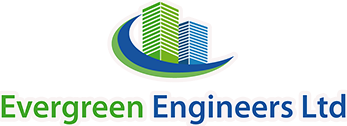Performing rental property inspections is a crucial aspect of property management that benefits both landlords and tenants. In this comprehensive blog, we’ll explore the importance of rental property inspections, the types of inspections, how they are conducted, and the value they bring to all parties involved.
Understanding Rental Property Inspections
Rental property inspections refer to the systematic evaluation and assessment of a rental property’s condition, functionality, safety, and compliance with lease agreements and regulations. These inspections can occur at various stages, including before a tenant moves in (pre-tenancy inspection), during the tenancy (routine inspections), and after a tenant vacates (move-out inspection).
Importance for Landlords
Property Maintenance: Inspections help landlords identify maintenance issues early, allowing them to address repairs promptly and prevent minor issues from escalating into major problems.
Safety and Compliance: Inspections ensure that rental properties comply with safety codes, building regulations, and health standards, reducing liability risks for landlords.
Lease Enforcement: Inspections help enforce lease agreements, ensuring tenants adhere to terms regarding property care, maintenance responsibilities, and prohibited activities.
Tenant Satisfaction: Proactive inspections demonstrate a landlord’s commitment to maintaining a safe, functional, and comfortable living environment, fostering tenant satisfaction and retention.
Documentation: Inspection reports serve as valuable documentation for tracking property condition over time, resolving disputes, and supporting legal actions if needed.
Benefits for Tenants
Safety and Comfort: Regular inspections ensure that rental properties meet safety standards, addressing hazards and ensuring tenants’ comfort and well-being.
Timely Repairs: Identifying maintenance issues early means faster repairs, minimizing inconvenience for tenants and preventing potential damage to personal belongings.
Transparent Communication: Inspections facilitate open communication between landlords and tenants, allowing for discussions on property concerns, improvements, and mutual expectations.
Peace of Mind: Knowing that their rental property is regularly inspected and maintained gives tenants peace of mind, enhancing their overall renting experience.
Types of Rental Property Inspections
Pre-Tenancy Inspection: Conducted before a new tenant moves in, this inspection assesses the property’s condition, documents existing issues, and establishes a baseline for comparison during move-out inspections.
Routine Inspections: Regular inspections (quarterly, semi-annually, or annually) allow landlords to monitor property condition, address maintenance needs, and ensure lease compliance.
Move-Out Inspection: Conducted when a tenant vacates, this inspection compares the property’s condition against the move-in inspection report, identifies damages beyond normal wear and tear, and determines any deductions from the security deposit.
Emergency Inspections: Occur in response to urgent maintenance issues or safety concerns, such as water leaks, electrical problems, or structural damage, requiring immediate attention and resolution.
Conducting Rental Property Inspections
Preparation: Schedule inspections in advance, notify tenants according to lease agreements or legal requirements, and coordinate access to the property.
Documentation: Use standardized inspection checklists to systematically evaluate each area of the property, noting any damages, repairs needed, safety issues, or lease violations.
Communication: Communicate inspection findings with tenants, discuss any required repairs or maintenance, address tenant concerns, and document agreements or follow-up actions.
Follow-Up: Schedule follow-up inspections as needed to verify repairs, monitor ongoing maintenance, and ensure property compliance.
Record Keeping: Maintain detailed records of inspection reports, communication with tenants, repair requests, maintenance activities, and any related documentation for future reference and legal purposes.
Value of Rental Property Inspections
Property Preservation: Inspections contribute to preserving the value and longevity of rental properties by identifying and addressing maintenance needs promptly.
Risk Mitigation: Regular inspections reduce risks associated with property damage, safety hazards, code violations, and potential legal disputes.
Tenant Relations: Transparent and proactive inspections foster positive relationships with tenants, promoting trust, communication, and collaboration.
Legal Compliance: Inspections help landlords comply with local regulations, landlord-tenant laws, fair housing requirements, and property maintenance standards.
Financial Protection: Timely identification and resolution of maintenance issues prevent costly repairs, minimize property damage, and protect landlords’ investments.
Conclusion: Enhancing Property Management Through Inspections
In conclusion, rental property inspections play a vital role in effective property management, benefiting landlords, tenants, and the overall rental experience. By conducting thorough and regular inspections, landlords can maintain property standards, ensure tenant safety and satisfaction, mitigate risks, and promote positive landlord-tenant relationships. Tenants, in turn, benefit from well-maintained properties, timely repairs, transparent communication, and peace of mind. Embracing a proactive approach to rental property inspections is key to successful property management, compliance with regulations, and long-term investment protection in the rental market.
For more information you can contact us or call us at 07500242494 / 020 3129 5156.

